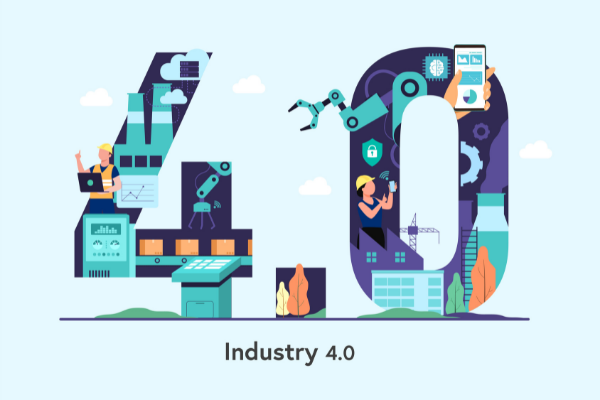 New technology is increasingly being adopted by the worldwide labour market. New technology makes it easier for businesses to automate regular work, which could disturb the balance of work responsibilities between humans and robots and algorithms.
New technology is increasingly being adopted by the worldwide labour market. New technology makes it easier for businesses to automate regular work, which could disturb the balance of work responsibilities between humans and robots and algorithms.
Industry 4.0 is a new stage in the organisation and control of the industrial value chain that is used interchangeably with the fourth industrial revolution.
“A name for the current trend of automation and data exchange in manufacturing technologies, including cyber-physical systems, cloud computing and cognitive computing, and constructing the smart factory,” is the definition of Industry 4.0.
Labour markets all across the world are undergoing transformations and disruptions. Images and documents are regularly stored in the cloud, emails remind us to submit follow-ups, and light bulbs may be turned on with a simple voice command.
Over the last two decades, the application of new technologies has resulted in the elimination of some jobs while the creation of new, previously unheard job titles.
Register for AMCAT | India’s Leading Fresher’s Assessment And Job Site (myamcat.com)
So, will these changes help or hurt our existing standard of living and future employment prospects? To discover out, we’ll have to dig deeper into the Fourth Industrial Revolution, including its possible impact and benefits.
What Impact Will the Fourth Industrial Revolution Have on the Future of Work?
Four technological developments are driving the 4th Industrial Revolution: high-speed mobile Internet, artificial intelligence and automation, big data analytics, and cloud technology. AI and automation are projected to have the greatest influence on global workforce employment in the coming time.
According to a recent McKinsey Global Institute study, AI and automation will affect around one-fifth of the global workforce, with the greatest influence in developed countries such as the United Kingdom, Germany, and the United States. By 2022, half of businesses expect automation to reduce their full-time workforce, and by 2030, robots will have replaced 800 million humans worldwide.
The 4th Industrial Revolution’s Impact on the Recruitment Industry
Artificial intelligence (AI) can help. Recruiters can use intelligent screening software like Ideal to help them process enormous numbers of CVs and locate the right candidate. It focuses at the skill sets and characteristics of present employees to locate the ideal candidate to join the team. It can even retrieve information about a candidate from their social media profile or open-source enterprise databases. Online interview software can be used to evaluate interviewees’ answers, including their word choice, voice patterns, and facial expressions, to evaluate their fit for the role, and chatbots can be used to answer candidates’ queries or provide feedback.
Recruiters confront both an opportunity and a threat from such innovative technology. On the one hand, AI technology has the potential to help recruiters work more efficiently and effectively by streamlining front-end procedures, eliminating repetitive and time-consuming tasks, and ultimately improving the client and candidate experience. On the other hand, if AI technology improves, it may eventually be able to replace recruiters.
Future Of Work
Changes in the workforce and technology improvements are natural and expected in every developing society. Some fear that the 4th Industrial Revolution may bring in a gloomy future in which robots have taken our jobs and a vast wealth gap exists between those who own robots and those who don’t. However, automating important operations could eliminate the most monotonous portions of our occupations, freeing up human workers to focus on more significant and rewarding responsibilities.
We will be able to focus on more important duties as a result of the Fourth Industrial Revolution, and employees in all industries will be able to execute their jobs to a higher standard. We’re searching for methods so that AI can be incorporated in workplaces and are excited about the future developments.

























